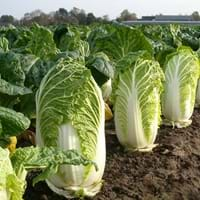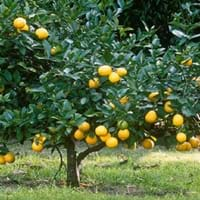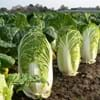Life Span
Annual or Biennial
Perennial
Types
Blues F1, Chinese Express, Monument
Avalon Lemon, Bears Lemon, Buddha's Hand, Bush Lemon, Citron
Habitat
agricultural areas
Mixed deciduous forest, Tropical regions
USDA Hardiness Zone
Not Available
9-12
Sunset Zone
A1, A2, A3, H1, H2, 1a, 1b, 2a, 2b, 3a, 3b, 4, 5, 6, 7, 8, 9, 10, 11, 12, 13, 14, 15, 16, 17, 18, 19, 20, 21, 22, 23, 24
H1, H2, 8, 9, 12, 13, 14, 15, 16, 17, 18, 19, 20, 21, 22, 23, 24
Habit
Clump-Forming
Oval or Rounded
Flower Color
Yellow
White
Flower Color Modifier
Bicolor
Bicolor
Fruit Color
Not Available
Yellow, Lemon yellow
Leaf Color in Spring
Light Green
Green
Leaf Color in Summer
Not Available
Green
Leaf Color in Fall
Not Available
Green
Leaf Color in Winter
Not Available
Light Green
Plant Season
Spring, Summer, Fall, Winter
Spring, Summer, Fall, Winter
Sunlight
Full Sun, Partial Sun
Full Sun, Partial Sun
Type of Soil
Loam, Sand
Loam, Sand
The pH of Soil
Neutral
Acidic, Neutral
Soil Drainage
Well drained
Well drained
Bloom Time
Spring, Summer, Late Winter
Indeterminate
Tolerances
Drought
Drought
Where to Plant?
Ground
Container, Ground
How to Plant?
Seedlings, Transplanting
Seedlings
Plant Maintenance
Medium
Medium
Watering Requirements
Prefer drip-irrigation instead of Over-head watering
Keep the ground moist but not water-logged, occasional watering once established
In Summer
Ample Water
Lots of watering
In Spring
Moderate
Moderate
In Winter
Average Water
Average Water
Soil pH
Neutral
Acidic, Neutral
Soil Type
Loam, Sand
Loam, Sand
Soil Drainage Capacity
Well drained
Well drained
Sun Exposure
Full Sun, Partial Sun
Full Sun, Partial Sun
Pruning
No pruning needed
Generally pruned to waist height, pruning needed for strong structure, Remove damaged leaves, Remove dead branches, Remove dead leaves
Fertilizers
20-20-20 amount, Compost
All-Purpose Liquid Fertilizer, Doesn't require fertilization when grown in rich soil
Pests and Diseases
Aphids, Beetles, Black rot, Blackleg, Cabbage looper, Cabbageworm, Clubroot, Flea Beetles, Nematodes, Purple Blotch, Slugs, Snails
Aphids, Grasshoppers, Leafminers, Red blotch, Rust, Snails
Plant Tolerance
Drought
Drought, Drought and Salt
Flower Petal Number
Single
Single
Fragrant Bark/Stem
Yes
Yes
Foliage Texture
Coarse
Medium
Foliage Sheen
Not Available
Glossy
Attracts
Bugs
Birds, Butterflies
Allergy
Not Available
Diarrhea, Hyperacidity, Sore Throat, Whooping Cough
Aesthetic Uses
Not Used For Aesthetic Purpose
Cottage Garden
Beauty Benefits
For treating wrinkles, Good for skin, Remove blemishes, Treatment of Dark Spots
Glowing Skin, Maintains teeth healthy, Making cosmetics, Nourishes scalp, Perfumes, Skin inflammation
Environmental Uses
soil stabilisation
Air purification, Fixes Nitrogen, Insect Repellent, soil stabilisation
Medicinal Uses
Folate, Low calories, Vitamin A, Vitamin C, Vitamin K
Acne, Antibacterial, Antirheumatic, Appetizer, Bone strength, Digestion problems, Hangover, Healthy teeth, Nutrients, Obesity, Oral health, Skin irritation
Part of Plant Used
Whole plant
Bark, Fruits, Leaf Stalks, Leaves
Other Uses
Used As Food, Used for its medicinal properties
Air freshner, Biomass for fuel, Can be made into a herbal tea, Leaves are used as mosquito repellent, Making Perfumes, Preferably used as black tea, Used as a nutritious food item
Used As Indoor Plant
No
No
Used As Outdoor Plant
Yes
Yes
Garden Design
Container, Edible, Herb / Vegetable
Container, Edible, Fruit / Fruit Tree, Hedges, Houseplant, Mixed Border, Topiary / Bonsai / Espalier, Tropical
Botanical Name
BRASSICA rapa 'Little Jade'
CITRUS limon
Common Name
Little Jade Napa Cabbage, Napa Cabbage
Lemon
In Hindi
नापा पत्तागोभी
नींबू
In German
Chinakohl
Citrone or Limone or Zitrone
In French
Napa chou
Citron or Citronnier
In Spanish
Lechuga de Napa
Limón or Limonero
In Greek
Νάπα Λάχανο
Λεμόνι [Lemóni]
In Portuguese
Repolho Napa
Limão
In Polish
Kapusta Napa
Cytrynowy
In Latin
Napa Brassica
Limon
Phylum
Magnoliophyta
Magnoliophyta
Class
Magnoliopsida
Magnoliopsida
Order
Capparales
Sapindales
Family
Brassicaceae
Rutaceae
Clade
Not Available
Rosids
Tribe
Not Available
Not Available
Subfamily
Not Available
Not Available
Number of Species
Not Available
Importance of Napa Cabbage and Lemon
Want to have the most appropriate plant for your garden? You might want to know the importance of Napa Cabbage and Lemon. Basically, these two plants vary in many aspects. Compare Napa Cabbage and Lemon as they differ in many characteristics such as their life, care, benefits, facts, etc. Every gardener must at least have the slightest clue about the plants he wants to plant in his garden. Compare their benefits, which differ in many ways like facts and uses. The medicinal use of Napa Cabbage is Folate, Low calories, Vitamin A, Vitamin C and Vitamin K whereas of Lemon is Acne, Antibacterial, Antirheumatic, Appetizer, Bone strength, Digestion problems, Hangover, Healthy teeth, Nutrients, Obesity, Oral health and Skin irritation. Napa Cabbage has beauty benefits as follows: For treating wrinkles, Good for skin, Remove blemishes and Treatment of Dark Spots while Lemon has beauty benefits as follows: For treating wrinkles, Good for skin, Remove blemishes and Treatment of Dark Spots.
Compare Facts of Napa Cabbage vs Lemon
How to choose the best garden plant for your garden depending upon its facts? Here garden plant comparison will help you to solve this query. Compare the facts of Napa Cabbage vs Lemon and know which one to choose. As garden plants have benefits and other uses, allergy is also a major drawback of plants for some people. Allergic reactions of Napa Cabbage are Not Available whereas of Lemon have Diarrhea, Hyperacidity, Sore Throat and Whooping Cough respectively. Having a fruit bearing plant in your garden can be a plus point of your garden. Napa Cabbage has no showy fruits and Lemon has showy fruits. Also Napa Cabbage is not flowering and Lemon is not flowering . You can compare Napa Cabbage and Lemon facts and facts of other plants too.





